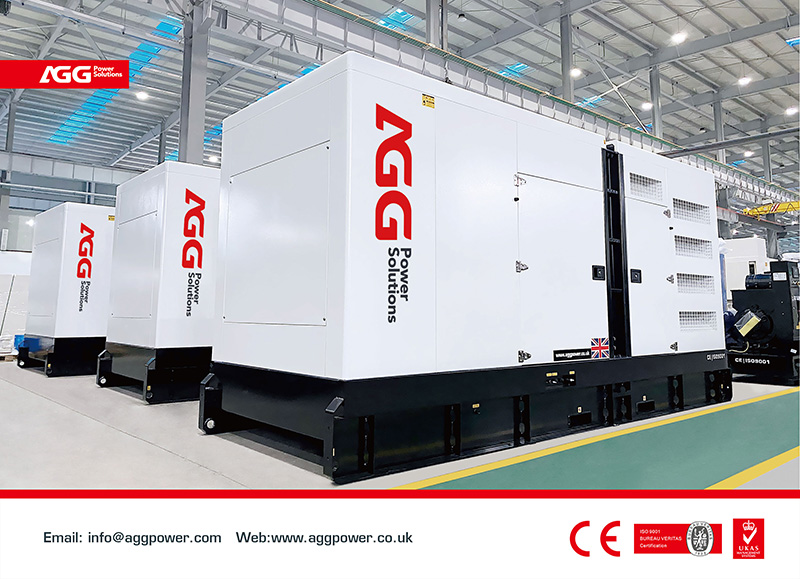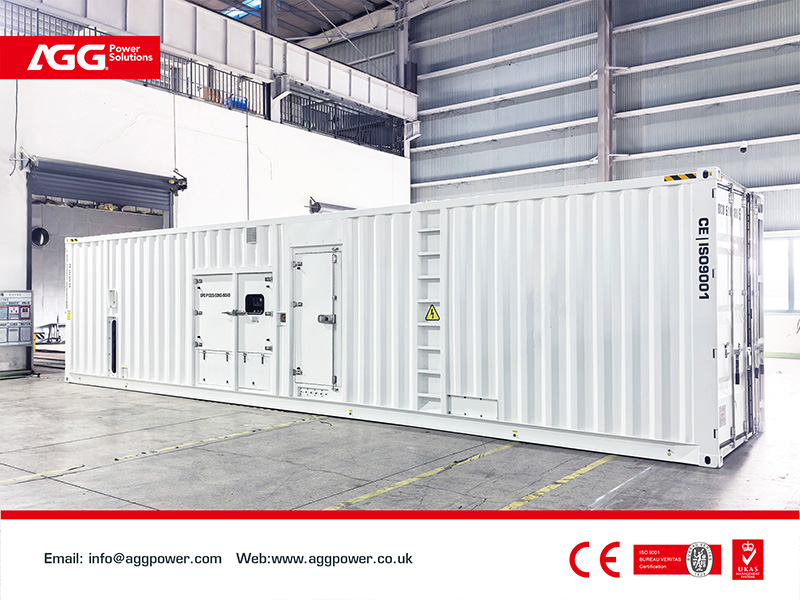1. Types of Noise
· Mechanical noise results from moving parts inside the generator set: friction, vibration, and impact when the unit is operating.
· Aerodynamic noise arises from airflow — when the flow is turbulent, irregular in frequency and amplitude, it creates broadband noise.
· Electromagnetic noise is generated by the interaction of the rotating machine’s magnetic air-gap and the stator iron core. Harmonics in the air-gap cause periodic electromagnetic forces, leading to radial deformation of the stator core and hence radiated noise.
2. Key Noise-Control Measures
The main methods for noise mitigation are: sound absorption, sound insulation, vibration isolation (or damping), and active noise control.
· Sound absorption: Use porous materials to absorb sound energy. While thin panels (such as plywood or iron plates) may also absorb low-frequency noise, their performance is generally limited. For example, stacking two steel plates of the same thickness only improves sound insulation by about 6 dB — so material choice and configuration are critical.
· Sound insulation: The ability of a material/system to block noise depends largely on its mass density. But simply adding layers isn’t efficient — engineers often explore combinations of lightweight materials to improve insulation significantly.
· Vibration isolation and damping: Generator sets often transmit noise through structure borne vibration. Metal springs work well in the low-to-mid-frequency range; rubber pads are better for higher frequencies. A combination of both is common. Damping materials applied on surfaces reduce vibration amplitudes and thus lower noise radiation.
· Active noise control (ANC): This technique captures a noise source’s signal and generates an equal-amplitude, opposite-phase sound wave to cancel the original noise.
3. Special Focus: Exhaust Silencer & Airflow Noise
A key source of noise in a diesel generator set room is the exhaust. A silencer (or muffler) fitted along the exhaust path works by forcing the sound wave to interact with the silencer’s interior surfaces or fill materials, converting sound energy into heat (and therefore preventing it from propagating).
There are different types of silencers — resistive, reactive, and impedance-combined. The performance of a resistive silencer depends on exhaust flow speed, cross-sectional area, length, and the absorption coefficient of the filling material.

4. Generator Set Room Acoustic Treatment
Effective acoustic treatment of a generator set room also involves treating walls, ceilings, floors, doors and ventilation paths:
· Walls/ceilings/floors: Use a combination of high-density insulation (for sound insulation) and porous absorbent materials (for sound absorption). For example, insulating materials such as rock wool, mineral wool, polymer composites can be used; for absorption, porous materials like foam, polyester fibers, wool or fluorocarbon polymers.
· Doors: A typical installation for a generator room would have one large door and one smaller side door — total door area should ideally not exceed about 3 m². The structure should be metal-framed, lined internally with high-performance sound-insulation material, and equipped with rubber seals around the frame to ensure a tight fit and minimize sound leakage.
· Ventilation / airflow: The generator set requires sufficient air for combustion and cooling, so the fresh-air inlet should ideally face the fan exhaust outlet. In many installations a forced-air intake system is used: intake air passes through a silencing air-slot then is drawn into the room by a blower. Simultaneously, the radiator heat and exhaust flow must be vented externally, via a silencing plenum or duct. For example, the exhaust passes through a silencing duct built externally around the silencer, often with an outer brick wall and inner absorbent panels. The exhaust piping may be wrapped with fire-proof rock-wool insulation, which both reduces heat transfer into the room and cuts vibration noise.
5. Why This Matters
A typical diesel generator in operation can produce internal room noise in the order of 105-108 dB(A). Without any noise mitigation, the external noise level — at the room exterior — may reach 70-80 dB(A) or even higher. Domestic generator sets (especially non-premium brands) may be even noisier.
In China, compliance with local environmental noise regulations is essential. For example:
· In urban “Class I” zones (typically residential), the daytime noise limit is 55 dB(A), and night-time is 45 dB(A).
· In suburban “Class II” zones, daytime limit is 60 dB(A), night-time 50 dB(A).
Thus, implementing the noise-control methods described is not just about comfort — it may be required for regulatory compliance when installing a generator in or near built-up areas.
If you’re planning to install or operate a diesel generator set in a noise-sensitive area, you should approach the challenge holistically: choose proper insulation and absorption materials, isolate and damp vibrations, carefully design the room’s airflow and exhaust path (including silencers), and if needed, consider active noise control solutions. Getting all these elements right can make the difference between a compliant, well-behaved installation and a nuisance (or regulatory violation).

AGG: Reliable Generator Set Provider
As a multinational company focused on the design, manufacture and distribution of power generation systems and advanced energy solutions, AGG offers tailor made solutions for a wide range of application.
The professional engineering teams of AGG can offer maximum quality solutions and services that both meet the needs of diversified customer and fundamental market, and customized services. AGG can also provide the necessary training for installation, operation and maintenance.
You can always count on AGG to ensure its professional integrated service from project design to implementation, which guarantees constant safe and stable operation of the power station.
Know more about AGG here: https://www.aggpower.com/
Email AGG for professional power support: [email protected]
Post time: Oct-22-2025

 China
China
